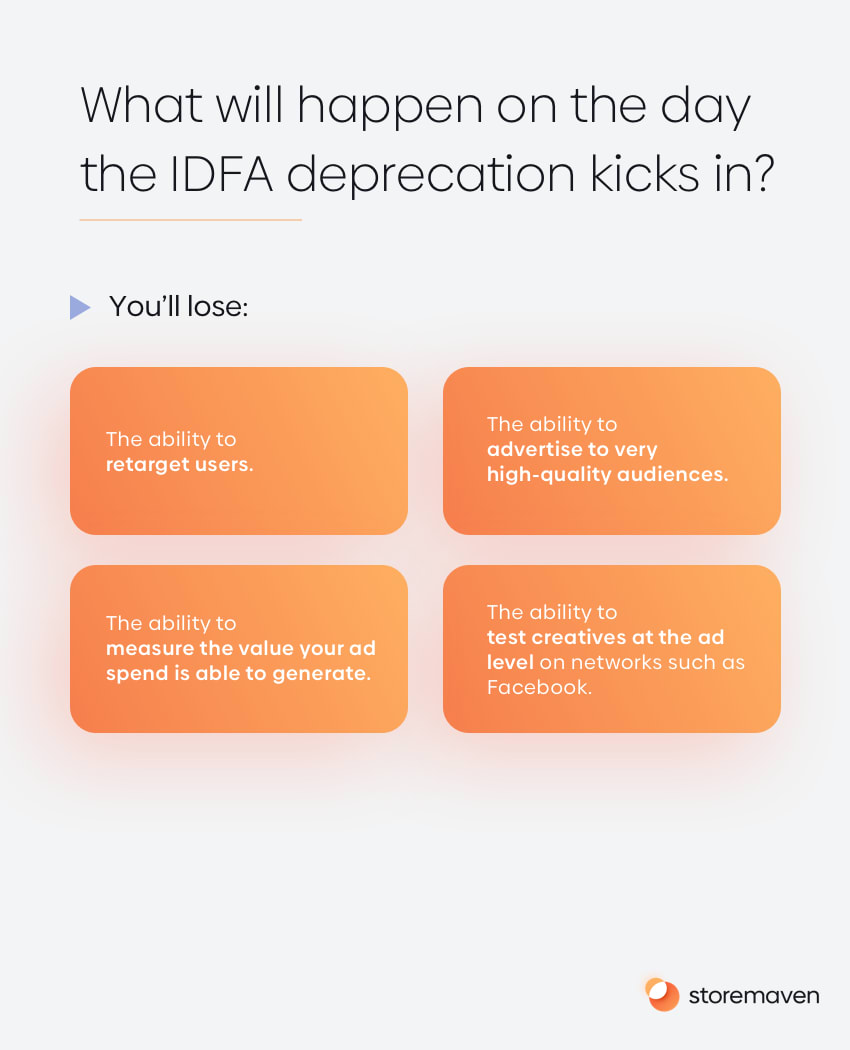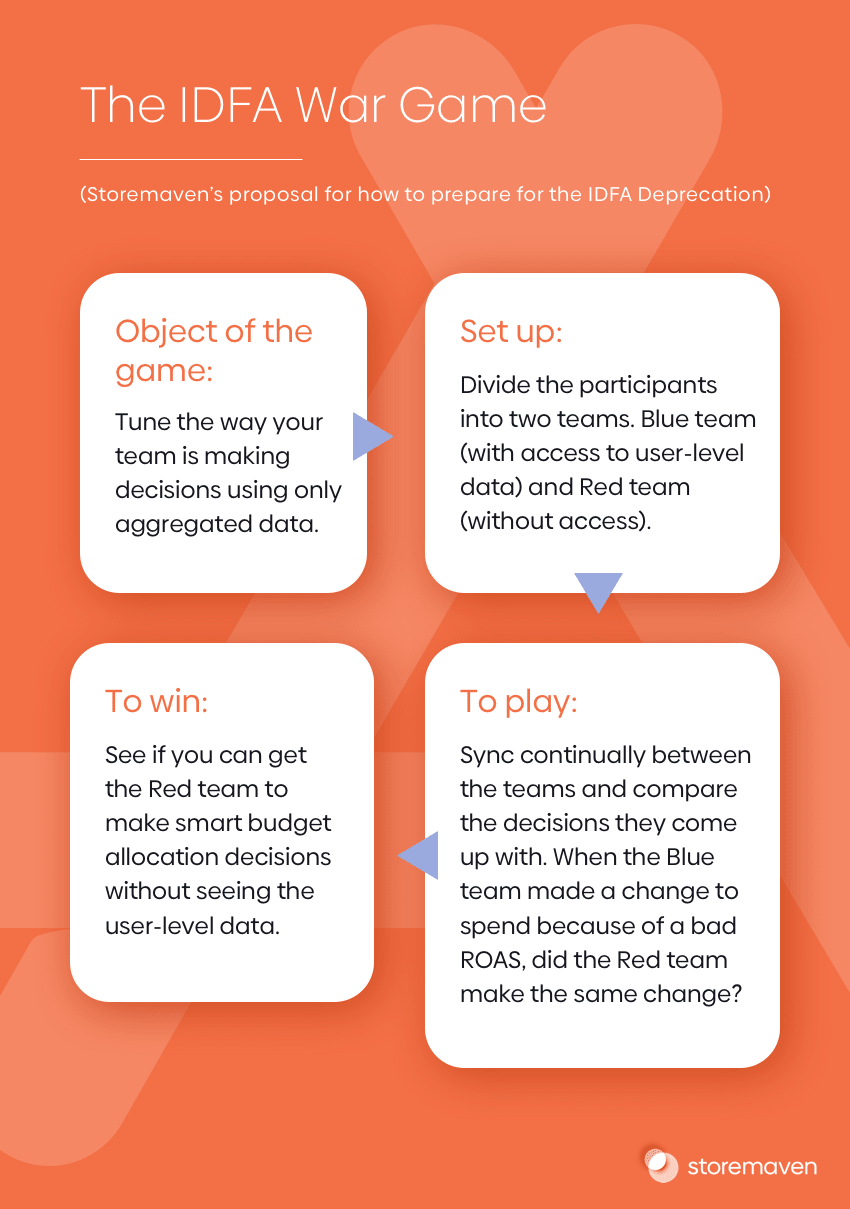It seems that 2020 wasn’t a good year for Apple’s relationships with the mobile world. Microsoft, Epic Games, Basecamp, and more developers were all extremely vocal about Apple’s rigorous policies regarding the App Store approval process and the 30%/15% fee Apple collects from all in-app purchases and subscriptions, respectively.
- iOS 14 was launched on September 16th, and we’ll update this post accordingly.
All that press was amplified in June when Apple announced they would require every app developer to get opt-in consent from users before they could share their IDFAs with 3rd parties.
It seems, though, that Apple has listened to the many voices in the ecosystem: developers, marketers, user acquisition leaders, MMPs, and ad networks who all yelled as one: “We’re not ready!”
So Apple has announced that it’ll delay the enforcement of the privacy guidelines with iOS 14 until “early next year,” whatever that means. It could be on January 1st. It could be March, April. No one knows.
But what we do know is that Apple has granted a grace period of a few more months before user-level data for UA and ad performance measurement purposes are banned.
What has that enabled us to do?
This new, somewhat surprising time is enabling us to prepare much better for the day after the IDFA kicks in.
Some things are going to be very different from that point on:

Let’s discuss each of these points in depth.
Retargeting was and continues to be a major growth avenue for many apps and games. The ability to advertise to lapsed users drove double-digit growth rates for many brands.
Evaluate whether cross-promotion is a good channel for you. If you work in a company that has a portfolio of apps or games, creating a strong cross-promotion system and process can drive tremendous growth, and using the IDFV you can still retarget lapsed users in one app when they use the other.
High-quality audiences are going to be replaced with broad, much less targeted audiences in networks such as Facebook. As Facebook already announced, they will disallow sharing audiences that advertisers have used so far with the iOS 14 specific ad account. This means that with iOS 14, you can only create Lookalike audiences (LAL) using existing campaigns for iOS 14. These campaigns can only be based on interest, demographics, and, the conversionValue.
The conversionValue is a 64-bit value that you can report back to Facebook after an install has occurred, via SKAdNetowrk, to tell them which users you want to optimize for. That said, Facebook announced they’ll only take conversionValues reported in the first 24-hours, so comparing the amount of data you reported to Facebook so far (a stream of events and in-app purchases) to only a very early event, is clear to have a much lower ability to build high-quality audiences. Facebook even reported that as a result, they expect a 50% drop in revenues for the Facebook Audience Network.
So for the day after, you need to prepare for a reality in which the audience that is exposed to your ads is much broader.
Performance measurement is also going to enter an era of much less accuracy. One approach is optimizing the opt-in consent flow to increase the percentage of users that provide consent. Some voices in the market are calling to extrapolate that user-level data to say something smart about the entire user population. For example, if you get 10% of users to opt-in and provide consent, you might be able to calculate ROAS on a specific ad by assuming these users represent the entire population and scale the revenues they generate to estimate how much revenue was generated by users that converted from that ad.
This approach is lacking, though, as it is only logical to assume that the 10% opt-in consent users do not represent the other 90%, and have significantly different characteristics, including their monetization profile.
Other voices are calling for using probabilistic models that use assumptions to estimate the likelihood that each user came from a specific ad. Without IDFA, though, that estimation will be grossly inaccurate to the point of probably being unusable.
Without user-level data, how do you make decisions around allocating your ad spend efficiently?
Build your post-IDFA decision-making engine
If you think about it, the only real data that you have is aggregated campaign level installs as an input and deep-funnel aggregated data on revenues, valuable events within the app, and more.
The promise of aggregated analysis is to analyze the impact of changes in the input, such as:
- Increased ad spend on different campaigns and networks.
- Changes in ad creatives.
- Changes in targeting.
On output metrics such as:
- The number of engagement events (such as registration, level completion, etc.) in the app
- Revenues
- Installs
These types of analyses are already used by organic growth teams that never had access to user-level data. These teams needed to understand the impact of their activities on top-level KPIs and had no other way than to run analyses on aggregated data.
This is soon to be the lives of paid user acquisition teams that’ll need to develop an engine for decision making. Constructing such an “engine” would require a mindset of taking into account different events and changes that are happening on the input side, running experiments to measure what happens to the measured, top-level KPIs when you introduce change to the model and conclude the estimated incremental value of different ad networks and campaigns.
A proposition: play a war game
This grace period introduced a unique opportunity.
You can now create a squad within your team to already tune such a model. Let me explain.

You can continue to run user acquisition the way you’re used to, and optimize spend towards ROAS using your user-level data coming in through your MMP. At the same time, you can create a small squad, preferably including analysts, that will try to make budget allocation decisions without seeing the user-level data, only the data you would’ve gotten from SKAdNetowrk as if Apple enforced the changes today.
Call them Team Blue (with access to user-level data) and Team Red (without access to user-level data).
What this will allow you to do is to sync continually between the Blue Team and the Red team and compare the decisions they came up with.
When the Blue team made a change to spend because a campaign wasn’t resulting in a high enough ROAS did the Red team make the same change? Was it around the same time, or was there a delay in that decision?
By getting the two teams to communicate with each other and explain their decisions to one another, you can tune, and then fine-tune the way the Red team makes decisions using only aggregated data.
Over the next few months, this will allow you to be ready with a strong decision-making process that doesn’t require user-level data.
Summary
You now have time you didn’t think you had, so spent that time wisely, not only by preparing your infrastructure but by fine-tuning the way you make decisions based on aggregated data. It might not be comparable to the user-level data era, but the end result might be good enough to still manage growth in the best possible way, moving into 2021.












